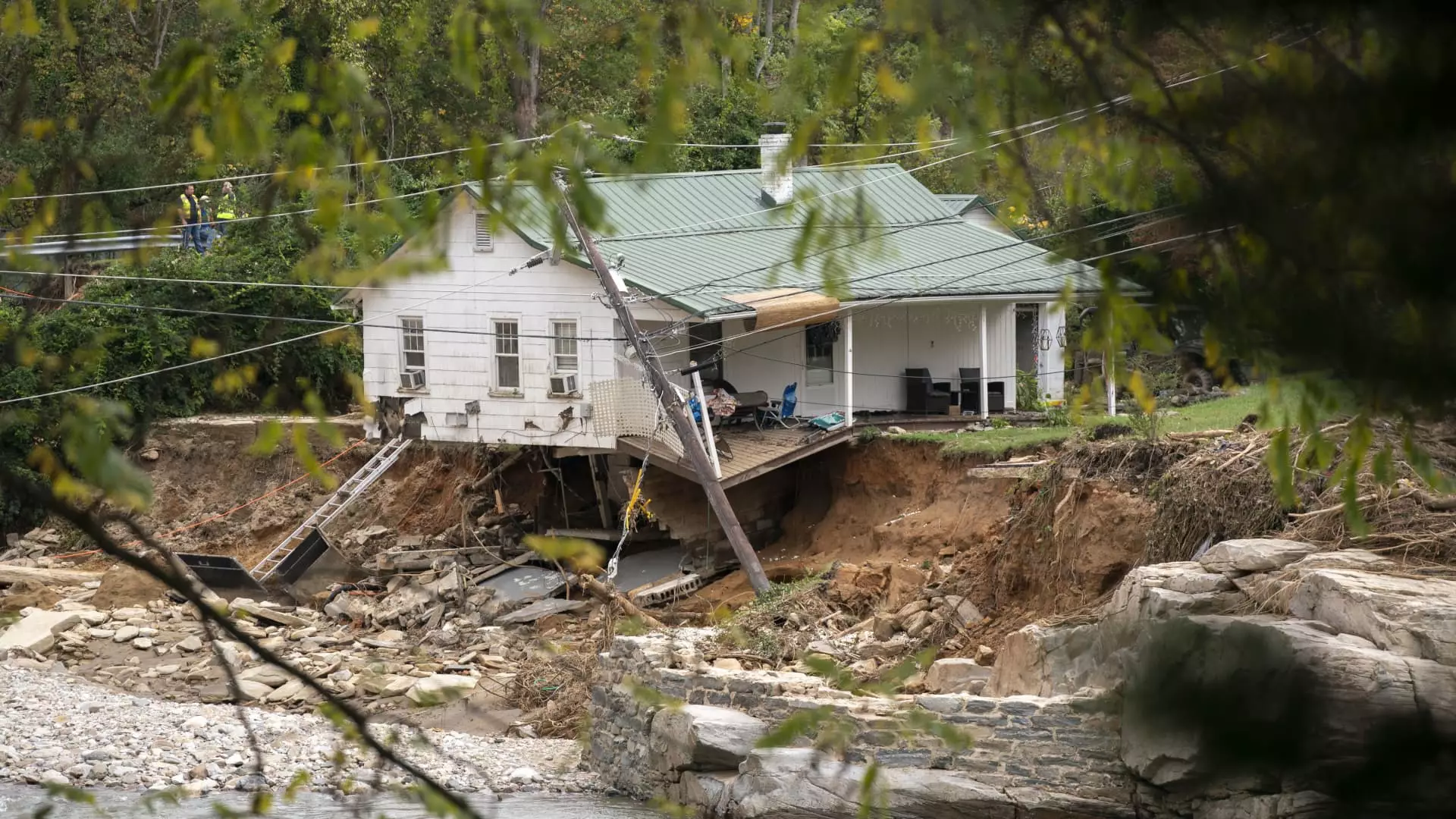Recent events, notably Hurricane Helene, have underscored the growing concern over climate risks in real estate. Rising insured losses for Hurricane Helene have been estimated at over $6 billion, with uninsured losses likely far exceeding this figure. The reality is that many homeowners in locations severely affected by the storm, particularly in North Carolina, lack adequate flood insurance. This oversight primarily stems from the Federal Emergency Management Agency (FEMA) designating only a small percentage (around 4%) of North Carolina homes as being within official flood zones. Such designations can create a false sense of security, leading homeowners to believe they are insulated from potential flooding dangers.
However, a new breed of risk-assessment technology is emerging, aiming to bridge the information gap that has long existed in property buying and insuring. In an era where climate changes are rendering historical data less reliable, understanding future risk projections is essential for both prospective homeowners and current owners looking to secure their investments.
Revolutionizing Risk Assessment for Homebuyers
As concerns escalate regarding the potential effects of climate change, innovative companies like First Street are revamping how homebuyers assess risks associated with properties. Utilizing advanced climate risk data, First Street has developed a risk assessment that quantifies potential threats over the immediate and extended future—specifically fifteen and thirty years ahead. This feature is now a part of every for-sale property listing on Zillow, turning the heat up on climate considerations in the homebuying process.
Skylar Olsen, Zillow’s chief economist, emphasizes that climate risk data are increasingly indispensable for buyers and sellers alike. The platform now displays comprehensive risk scores addressing various concerns, including flooding, wildfires, and extreme weather conditions, allowing consumers to make informed decisions while also factoring in long-term affordability—a vital element given the rising cost of living.
The integration of these risk analytics offers much-needed transparency in a market where a growing number of buyers—over 80% according to a recent Zillow survey—are prioritizing climate risks in their purchasing decisions.
The prevailing notion that residing outside a FEMA-designated flood zone automatically equates to safety is profoundly misleading. Ed Kearns, Chief Science Officer at First Street, stresses that heavy rainfall can inflict damage on homes well beyond these designated areas. As climate change continues to escalate, even minor storms have the potential to inflict major flooding events.
In response to this pressing issue, First Street has rolled out new, more accurate flood maps that take into account evolving climate realities. By providing this data, the firm allows consumers to critically assess their need for flood insurance, potentially saving thousands in unanticipated damages.
The ramifications of heightened climate risk are not merely academic; they are poised to have substantial effects on real estate values. Zillow data illustrates that many more homes face major climate risks today than they did five years ago, with nearly 17% flagged for significant wildfire risk and around 13% indicating a major risk of flooding in August listings alone.
As consumers increasingly turn to these climate assessments during their property searches, the ripple effects on home values will be profound. Properties burdened by higher insurance costs or located in areas projected to be affected by climate change are expected to see a decline in market valuation. Kearns posits that as the real estate market increasingly recognizes the necessity for contingent insurance to safeguard properties, the relevance of climate risk scores will only amplify, further influencing investment decisions.
Navigating the complexities of climate risk in the real estate sector presents both challenges and opportunities. By offering enhanced transparency and real-time data on climate-related risks, technology can empower consumers to make informed choices. As American homeowners contend with the dual realities of climate change and property value fluctuations, the integration of climate risk data into the homebuying process has never been more crucial. By turning the tide on outdated perceptions, prospective buyers can safeguard their investments while fostering broader awareness about the true risks present in today’s marketplace.

